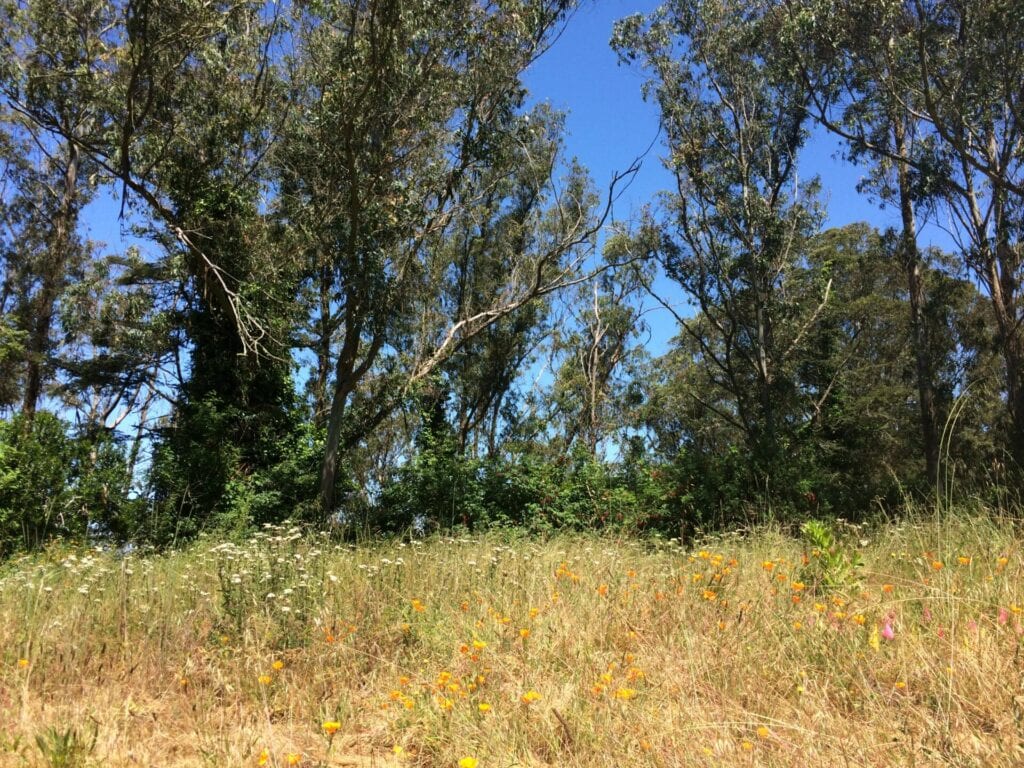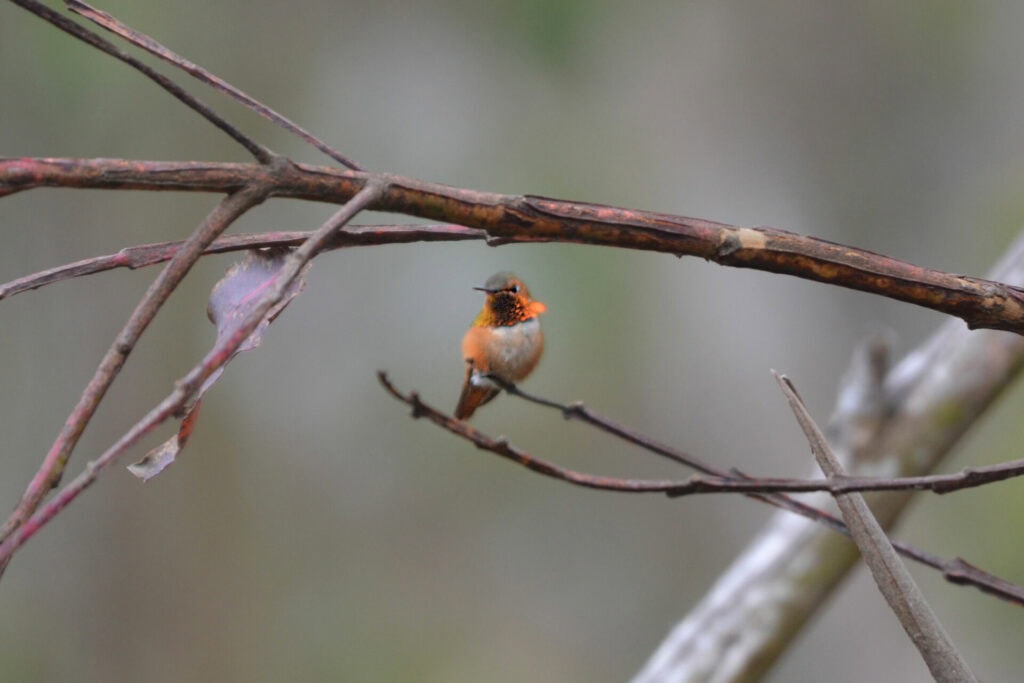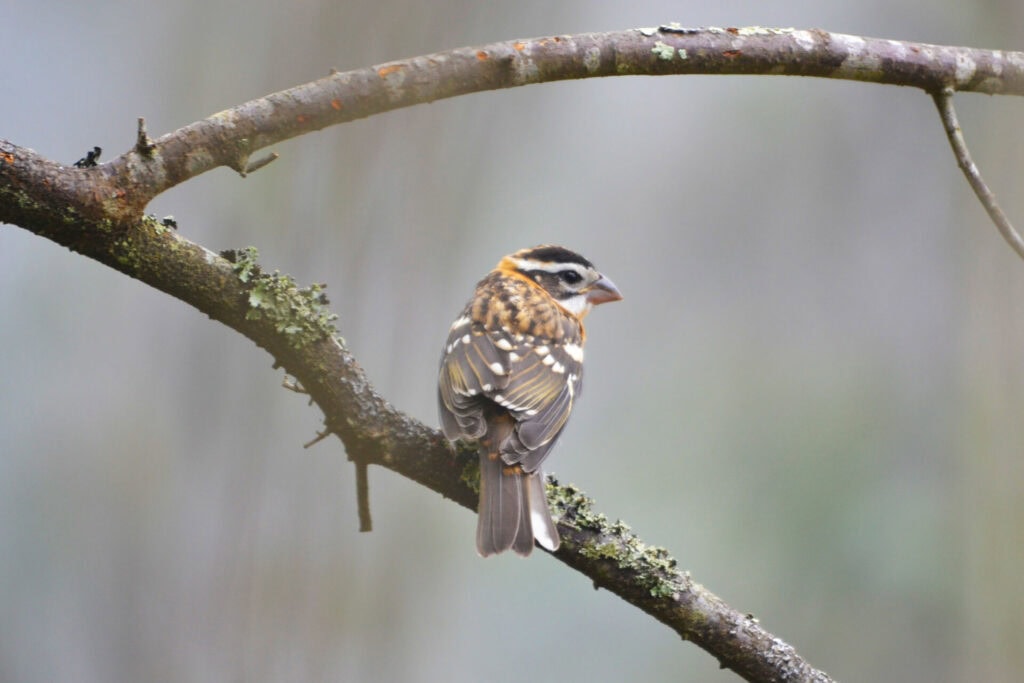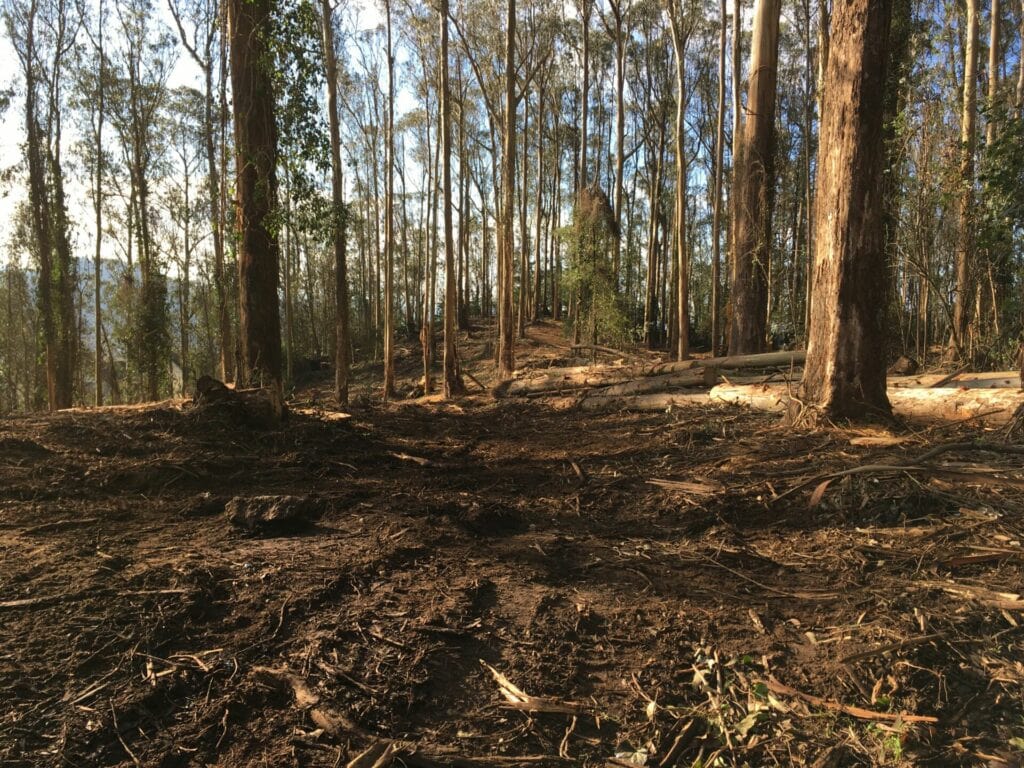Monitoring Mount Sutro
By Dominik Mosur
For much of my birding “career” I have been drawn to the concept of Patch Birding. This is an approach to birdwatching where a specific site is visited on a regular basis allowing for a real-time glimpse at the timing of migrant arrivals and departures, breeding behavior, and the influence of seasonal changes on bird activity.
In fall of 2022 I was notified that Golden Gate Bird Alliance was looking for an observer to continue a multi-year project to survey Mount Sutro Open Space Preserve. I jumped at the opportunity to put my patch birding proclivity to a constructive purpose.

The Preserve has been the site of a years-long restoration effort and these surveys are designed to tell us how this is affecting the birds that live here. Swaths of the Preserve that had for decades stagnated under a canopy of mostly Blue Gum Eucalyptus towering over Himalayan Blackberry and English Ivy have been opened up and revegetated with native shrubs and annuals. This restoration has created a mosaic of habitat much closer to what would have been present prior to the establishment of San Francisco.
Reflecting now on my own two years of accumulated data as well as data gathered by previous surveys dating back to the spring of 2019 and incidental eBird data from other observers, a picture of what is happening has begun to emerge.
The Preserve is a permanent home to about 25 species of birds. In addition, another 30 species are present only as breeders or non-breeding season visitors. Over 110 species in total have been noted to date. Some of the more notable are as follows:

Allen’s Hummingbird — The Preserve has one of the higher densities of nesting Allen’s Hummingbirds of any site in San Francisco. This is important because this “fog-belt” obligate hummingbird has been notably declining in much of its range along the coast of California. Interestingly, perhaps due to the higher elevation on Mount Sutro (~550-900 feet) Allen’s Hummingbirds tend to arrive here a week or two later than they do in other parts of San Francisco at lower elevations.
Band-tailed Pigeons — Formerly known in San Francisco only as fly-over migrants and dispersers, Band-tails are now established as localized breeders in the City, with Mount Sutro and surrounding areas making up the core of their range. I suspect the increase in Red Elderberry, one of the main plants promoted in the restoration and a key Band-tail food source, could be the reason.
Olive-sided Flycatcher — Another species that has notably declined over much of its range in the state, this long distance migrant holds on to Mount Sutro as its only breeding site in San Francisco for about the last decade. For the past two years a pair of Olive-sided Flycatchers have nested above the course of Woodland Canyon Creek, using the same Monterey Cypress tree for their nest site.
Nuttall’s White-crowned Sparrow — This central California coast fog belt endemic sub-species is one of the more common nesting birds in some parts of San Francisco. Interestingly enough, they were notably absent as confirmed breeders in the core areas of the OSP for the first several years of the surveys. However, as planned tree removal and unplanned storm related tree-fall opened up the canopy inside the reserve in the last two years, White-crowned Sparrows responded almost immediately. In the spring of 2024 several were singing at the headwaters of Woodland Canyon Creek. Nesting success was confirmed later in the summer with the presence of recently fledged juveniles. GGBA board member Angie Geiger who lives right at the edge of the preserve even noted juvenile White-crowns in her yard for the first time in mid July.
Orange-crowned Warbler — a very localized nester in San Francisco known from a handful of sites and not confirmed every year, Orange-crowned Warbler can be counted to stake out a breeding territory or two on Mount Sutro every spring. Orange-crowns on the California coast are known to prefer densely vegetated steep hillside habitat that is not shaded in by closed canopies. The thinning of the historic Eucalyptus plantations at the Preserve is likely a contributing factor to their presence in the breeding season.

Black-headed Grosbeak — In the summer of 2021 surveys revealed nesting success for Black-headed Grosbeak on Mount Sutro. This was the first time this species had been documented breeding in the city since the 1910s! Once again the proliferation of Red Elderberry and other native berry producing shrubs are suspected to have been a key factor as well as the presence of feral plums which produce fruit in the peak of breeding season.

Mount Sutro Open Space Preserve is a relatively rarely visited site compared to more popular birding destinations in San Francisco. For the GGBA members who have not made the trek, I encourage you to explore its miles of trails and see what you can turn up.
Dominik Mosur is the curator for the Wild in California live animal exhibit at the Randall Museum. He has also been leading birding field trips and surveying bird populations in California since the early 2000’s.
